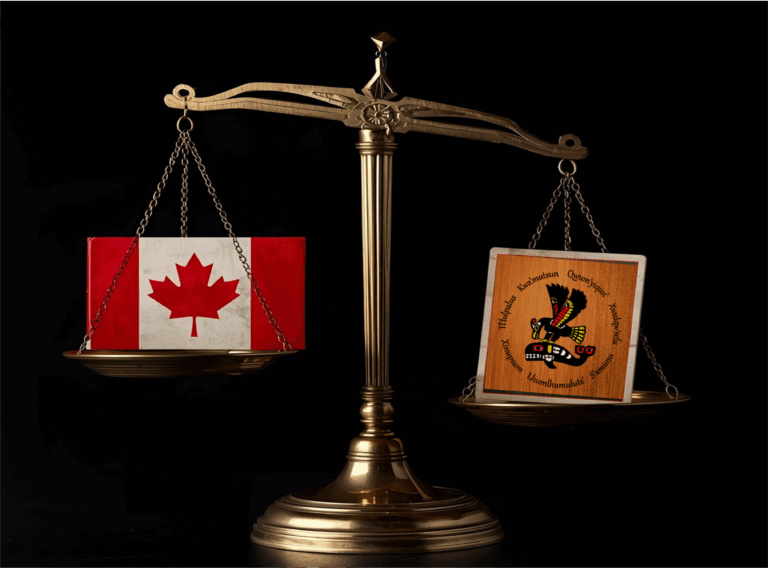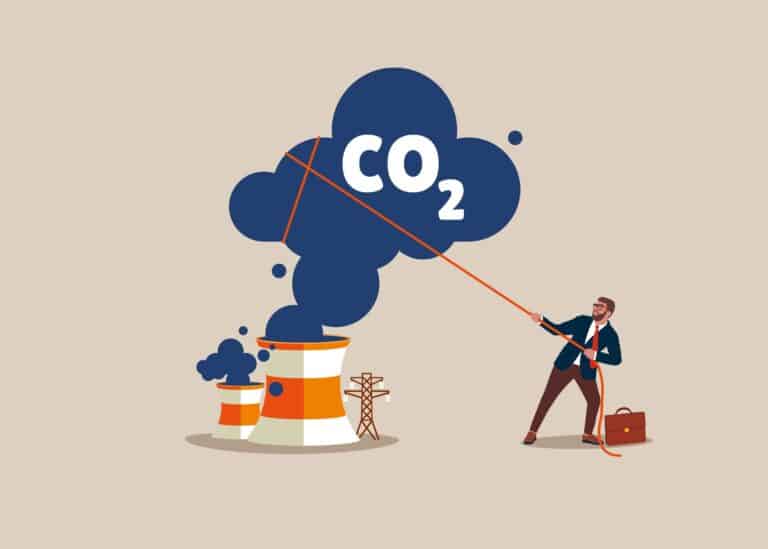Twenty-one years ago, Bob Geldoff and a litany of well-intentioned celebrities gathered in London to raise awareness and money to end world hunger. At the time, connections between poverty in the developing world, and dinner in Canada seemed tenuous at best. It was rare to get fresh artichokes out of season; phone calls to Hong Kong were well over $1 a minute, and long-weekend flights to Florida, for all but a few jet-set-millionaires, were completely out of the question. Today, thanks to global supply chains and communication networks, vine-ripened tomatoes sit in corner stores across the country, and South African apples are part of most Canadian diets.
Citizens from developing countries, who have patiently listened to promises from the West about the benefits of globalization, are slowly beginning to realize some of the benefits of investing in the global economy. Ironically, as their investments begin to bear fruit (literally), a renewed global movement toward environmentalism and food safety threatens to steal the wind from their sails. When it comes to “perfect storms” in the area of global policy, the agricultural sector, addressed in this paper, will almost certainly set the tone for other industries, including the automotive, IT, and mining sectors.
The story begins with the most commonly cited notwithstanding clause in global trade policy, which is that all states first have an obligation to their citizens with respect to the health and safety of consumable products. Ask a cattle farmer in Alberta, a dog owner who fed their pet food sourced from China, or even a casual spinach eater about how global food issues can come home to roost here in Canada, and you’re likely to get a spirited response. A public official caught off guard by a health scandal rarely lasts long, as citizens hold governments and regulatory agencies to account when accidents happen. Those directly responsible for Walkerton’s water crisis in 2000 pled guilty to breach of public duty, and the Conservatives in Ontario promptly lost the next election to the Liberals – who campaigned, in part, on providing safe drinking water. Few could have expected the former head of China’s Food and Drug Administration (Zheng Xiaoya) to be sentenced to death for his role in the latest global food catastrophe, though it certainly signifies the lack of national or local tolerance for mistakes (and corruption).
Health and safety concerns are acceptable grounds for countries to restrict the import of certain products. Traditionally, the difficulty comes in managing the grey area, where health and safety issues meet efforts to ensure a constant level of domestic production and efforts at labour protection. Highly paid trade lawyers roost in Geneva, representing the interests of countries (and companies) at WTO arbitration hearings, anxious to tweeze out what are actually health and safety aspects, rather than simply newly fashioned domestic product protectionism.
For years, the navigation of international trade law has been primarily a concern for large multinational businesses. They were more likely to export in large quantities, and more likely to take on the heavy logistics required to do so. However, as the global market changes, a growing number of micro-, small- and medium-scale producers are engaged in international affairs, affected quite directly by the regulatory shifts of the trade arena. An area that is awash with legal (and political) implications is the import / export of fresh fruits and vegetables, as small scale farmers in the global “South,” are brought on-line to compete within pre-existing global distribution chains. Beholden to international trends, trade law, and regulations within the market, these farmers face challenges that often demand capital and lobbying power.
One need look no further than the most recent Doha Development Round of WTO trade negotiation to see what’s at stake: the G20 (a group of developing nations led, in practice, by Brazil and India) recently reiterated that, “agriculture lies at the centre of the Doha Development Agreement.” Indian Trade Minister, Kamal Nath, stated in June that, “[w]e believe that this is an historic opportunity to correct the structural flaws in agriculture trade.” One cited “flaw” is the $22 billion (USD) a year in subsidies given to American farmers by their government. Canada’s position, moderated by strong demand for cheap imports and resource riches, remains more tempered: Canadian negotiators are pushing for the elimination of farm subsidies combined with freer trade.
The seemingly simple act of exporting a fruit or vegetable from Kenya, Peru, or Thailand to Canada is governed by a host of laws falling under the jurisdiction of no less than three Canadian government agencies. But this is an improvement for farmers from the developing world who, until recently, held virtually no hope of competing against their large foreign-owned neighbours.
Beyond the regulatory realm of government, niche market certification processes (i.e. organic or fair trade), are also gaining momentum. Though not a legalized import requirement, these certification schemes, all relatively new, purport to deliver a premium return to growers (and others involved in the process). While coffee led the charge here, most urban Canadian grocers now have broad areas devoted to “certified organic” produce. Coffee shops are springing up in even the smallest of cities advertising “fair trade” coffee and chocolate.
Tack onto all these rules the private sector regulation schemes, which are technically voluntary, but which govern standards and procedures for goods and services on a business-to-business level. These cover a wide range of options, and are led by diverse interest groups in many different parts of the world.[1]
The United Kingdom, seen as a leader in these voluntary business-to-business initiatives, passed the Food-Safety Act in 1990, which forces retailers to demonstrate “due diligence” with regard to consumer safety, when stocking their shelves. Solomon Asfaw, a researcher in Development and Agricultural Economics at the University of Hannover, wrote earlier this year that, “[I]n practice, this means that supermarkets have become much more involved in imposing requirements on how food is produced throughout the commodity supply chain, even to the degree of monitoring and controlling horticultural production in developing countries.”
The UK’s Food Safety Act led to the establishment of EurepGAP (Euro-Retailer Produce Working Group, Good Agricultural Practices), which was set up in 1997 and is an example of a business-to-business model. The group’s website suggests that, “EurepGAP was driven by the desire to reassure consumers. Following food safety scares such as BSE (mad cow disease), pesticide concerns and the rapid introduction of GM foods, consumers throughout the world are asking how food is produced; and they need re-assuring that it is both safe and sustainable. Food safety is a global issue and transcends international boundaries.”
The last sentence hints at the international scope of EurepGAP’s mandate, and a second reason why Tesco, Walmart, and other large importers are paying close attention to quality control measures in the South; if you’re sourcing your food from somewhere else, you still have to be certain of what you’re getting.
From the perspective of producers in the developing world, the down side of these varied “health and safety measures” is the amount of dollars, euros and pounds required to comply with the ever-changing regulatory environment. However, there are some important benefits of this certification as well. Kenya is at forefront of this phenomenon, and the country’s rural smallholder producers provide a good example of what others may be about to experience.
Kenya
Kenya’s agricultural sector has grown exponentially in the last 35 years, according to Asfaw, at an “average growth rate of 20 percent per annum in terms of hectarage, production, and earnings”. The sector is described as a critical contributor to employment, improved food and nutrition security and increased foreign exchange earnings. Europe imports 89.4% of Kenya’s agricultural exports, which grew to 166,000 MT in 2004 (up from 1,477 MT in 1968). North Americans have similar relationships with trading partners in Latin America.
Reflecting the global nature of trade, Asfaw notes that, “[Kenyan] producers are facing new challenges related to changes in the structure of consumer demand and the transformation of the food retail market in Europe. [EU] retailers are setting global benchmarks for the production of fresh food, and are asking their suppliers for produce to be certified according to food-safety and quality standards. It is therefore questionable whether small-scale farmers have the resources and skills to comply with standards, and the cost of implementing these standards may drive most producers out of lucrative fresh export business.”
This concern – that farmers in countries like Kenya may be driven out of the vegetable export business – has spawned the growth of globally-focused agencies like VegCARE, a medium sized operation in Kibweizi, Kenya.
VegCARE
Building on a Canadian International Development Agency and International Fund for Agricultural Development-funded program in Kenya that commenced in 1999, CARE established VegCARE in early 2005. VegCARE is a joint venture, co-owned by CARE Kenya and Vegpro Limited, and will soon to be registered as a private company. The company links hundreds of smallholder farmers in Kibwezi, Kenya (40% of whom are women), to high-value export markets.
VegCARE, and farmer Francis Kamau have worked together for several years. Francis is a member of the Kikoo Small Scale Farmers’ Group, which was set up in partnership with VegCARE in the late 1990’s and was one of the first such groups to be EurepGAP certified. Francis owns 3 acres of land, and produces baby corn, okra, chillies, and eggplants/aubergines aimed at the export market. The domestic market has little use for these products. Reflecting the norm in Kenya, Francis does not have a title for his property, but does have access to low-end credit services through microfinance institutions. Francis now makes 12,000 Kenyan Shillings (KES) (US$175) per month, a significant leap from 300 KES just 3 years ago. He can pay his children’s school fees, and cover incidental medical expenses as they come up. Francis will be the first to tell you, you needn’t bother coming to his farm – every aspect of the operation, from planting to fertilization, is now documented and easily sent by fax. With fully traceable passage from the farm to the grocery store, Francis says, “the market should not break down at any one point.”
Francis’ documentation is the result of compliance with European import standards. Under EurepGAP, if a British citizen has a health complaint about an eggplant she eats for dinner on a Monday, she can return to the grocery store with the sticker from the vegetable, and, eventually, Francis will get a text message on his cell phone explaining that there is a problem with, for example, the fertilizer being used on plot A3.
EurepGAP Certification didn’t come cheaply for Francis or VegCARE. Certification for the Kikoo group, from start to finish, was a process valued at approximately 1.2 million Kenyan Shillings (US$17,500). VegCARE officials estimate that this cost can be brought down by 30% in the future, but the total cost per acre for small scale farming associations is expected to remain steady at nearly US$1000. Most of these costs are one-time payments (buildings, toilets, etc.), but about 15% are recurring costs – things that need to be replaced annually or semi-annually (suits, record keeping, etc.). While recurring costs are often absorbed by higher profits, the investment in certification currently remains well beyond the reach of most farmers.
Francis’s group is not expected to repay VegCARE for much of the cost associated with certification. As a joint, profit-sharing venture, VegCARE predicts positive long term returns on investment, as long as they can be assured of lasting relationships with their partners in the West, and access to tolerant or low-interest capital.
VegCARE, is a social enterprise that considers itself in partnership with the farmers it works with. VegCARE provides short-term loans to farmers, along with technical consulting services: primarily to do with crop rotation, fertilizer use, certification requirements, and water conservation. Today, farmers are organised into formally-registered farm sub-companies (allowing the members of the companies to formalize their assets) and are producing 40 metric tonnes of fresh vegetables every week. The vegetables are purchased by Vegpro, one of the region’s largest fresh horticultural produce companies, and delivered to supermarkets across the United Kingdom the next morning.
Two sides to every story
Setting aside the more difficult question of whether schemes like EurepGAP actively discriminate against imports as a whole, it is clear that such regulatory environments dramatically affect small-scale enterprises in the South. In many respects, Francis is an aberration. The cost to compete would sink the average small-scale farmer. But examine the other side of the coin, and we begin to understand the benefits of overcoming these hurdles.
The hurdles of certification are high for a small-scale farmer. EurepGAP, unlike the niche market certification schemes like “organic” and “fair trade”, is unlikely to provide significant price premiums, because, though technically voluntary, the system is considered a soon-to-be defacto standard for all fresh fruits and vegetables leaving Kenya for the international market.
Beyond the massive initial expense (shared in this case by VegCARE), and the recurring costs, other downsides of the certification process for Francis are the heavy administrative burdens (paper trails, accounting, etc.), and the constant training and skill level updating.
But there are two potential benefits, often overlooked by those who suggest that such schemes will mark the end for Kenya’s small scale farmers: the increased production resulting from more efficient farming practices, and the new “identity” of group members, potentially giving them access to additional domestic financing.
Increased production may be marginal at first, but Francis and his colleagues have found that by better understanding crop rotation, pesticide distribution and other technical aspects they are starting to see higher yields and fewer rejected products. The capacity and skill levels of the group are up, and cooperation between farmers is also much improved. Though these successes are due, in large part, to the VegCARE partnership, it was partially the creation of EurepGap that promoted the inception of VegCARE, so the two may share credit.
Farmers are also finding that the notoriously conservative bankers in Kenya are starting to see EurepGAP certification as the farming equivalent of a guaranteed market. This means that they are beginning to see certified small-scale farmers as less risky investments. Though long-term, low-interest capital financing from domestic sources seems a long way off yet, there are signs that the banking arena is changing. The system – totally dependent on global networks and supply chains – appears to be, finally, working to benefit people like Francis. He is more hopeful now than ever before.
Winds of Change
Francis’s success suggests to agencies like CARE Canada that great potential lies in the notion of linking businesses in the global South to consumers in the West. However, in spite of this success, the winds of change are once again blowing through the West. The WTO and other trade agreements have for years been lightning rods for human rights activists and domestic labour lobbies. Seattle demonstrated this most clearly. The Doha round is no different. What is new this time is the strengthening relationship between Western producers and local environmental movements. Large retail outlets, under pressure from all sides, are encouraged to look at the environmental impact of importing fruits and vegetables from places like Kenya. This greatly worries VegCARE and Francis, who may then never see the return on their EurepGAP investment – a concern they share with the large-scale corporate producers closer to Nairobi.
Though the UK is further ahead here, Canadians are not far off. The “100-mile-diet” phenomenon, popularized last year by two Vancouverites, has received wide attention in the press, and strong support from local environmental groups. One of the authors, contacted for this paper, notes that already 10,000 subscribers to the project’s website have, “pledged to eat locally (growing by about 100 new ones every 2 weeks).” “Buy local – save the planet” goes the movement’s logic and, to a very limited extent, the logic holds true. A tomato is a tomato and, if it’s grown in your backyard, it will require less energy to make it to the dinner table than a similar tomato shipped in by airplane from Mexico. The overall “carbon footprint” in this case is, presumably, reduced.
However, calculating “food miles” is considered among the crudest form of carbon tracking because transportation accounts for generally only 10-15% of a product’s total carbon lifecycle. More nuanced carbon footprint calculations are being introduced to include a broader look at the product’s supply chain, but a recent study described in the Economist suggests that science of carbon footprinting, particularly with regards to agricultural, is murky at best.
Numerous agencies, including Canadian-born “CarbonCounted”, are hoping Canadians will support the use of “green” product labels estimating the total CO2 “released into the environment.” Steve Cox, the company’s co-founder, notes that when it comes to measuring emissions, while the measurement systems are far from perfect, “you’ve got to start somewhere.” But, he also adds that while we assume a tomato grown outside Toronto emits less CO2 en route to a Toronto table than a Mexican variety, until we do the math, no one actually knows. “We just won’t know until we measure it,” He says.
At issue is modelling used to derive the overall carbon released into the atmosphere, and what is included as part of the particular product’s footprint. Farmers in the global south fear that, as with other trade barriers, carbon accounting systems will be established to discriminate against their products, without due consideration for the real numbers involved.
Were Canadians to adopt a more holistic perspective on carbon footprinting, Kenyans would weigh in well below their Western counterparts. Francis doesn’t use a greenhouse, a tractor, or a $50,000 watering apparatus. His fields are watered using a gravity-fed system, and his home has no electricity. He has never owned an SUV, or flown in an airplane.
BBC science commentator Gareth Edwards-Jones notes that there is little consensus within the scientific community on how to most fairly calculate “food-miles” (the distance from the farm to the dinner table). “While those making these calls may seem to have common sense on their side, the science which could be used to underpin their arguments is at best confusing, and at worst, absent.”
Take the following crude example. On the face of it, most people would argue that carbon emissions are much higher when transporting tomatoes from Mexico to Vancouver, than if they had been brought in from the Okanogan Valley. The assumption seems to be that even during “shoulder seasons”, when Canadian farmers must use greenhouses and artificial light to grow produce, the quantity of CO2 emitted by an Okanagan farmer is believed to be less than a farmer exporting tomatoes from the Baja Peninsula. But Kenyan farmers would surely argue for a more holistic approach. The impact of buying from Canadian producers is not well studied. Cox notes that transportation is usually only 10-15% of the product’s overall Carbon emission. A comprehensive, if wildly costly, study of “Walkers” chips in the UK found that 44% of carbon emissions happened before the potato left the farm.
Secondary effects are also generally ignored. Supported by those tomato sales, many Canadian farmers will hop on an airplane and visit Mexico on their winter vacation. By contrast, an average farmer in Mexico might pay for his youngest child to enter grade 3. It’s not that Canadian producers have no right to a vacation – all Canadians know the rejuvenation that comes from burying one’s feet in the sand and setting in for a mid-February sunburn. But small-scale Mexican farmers would surely argue that a nation’s overall carbon demands should be factored into the equation when accounting for the carbon contribution of a particular object. While at present the system designed by Carbon Counted does not include secondary emissions like staff transport and national consumption, Cox notes that the calculation matrix is constantly evolving. (There is a second aspect to this: Canada has an active farm labour immigration program which brings farm hands to Canada from all over Latin America and the Caribbean in order to plant, weed, spray and harvest our crops.)
If meeting EurepGAP requirements is difficult for most small-scale farmers in Kenya, selling produce under a simple-minded labelling regime that only emphasizes the shipping footprint will be impossible. Moving an eggplant from a field outside Nairobi to a grocery store in London will always require a 4247-mile flight, on an Airbus A380 cargo plane. But it doesn’t necessarily follow that it would be better for the environment to grow eggplants in Manchester.
Canadian Policy
Throwing a green wrench into the waterlogged global trade negotiation process will force further systemic failure. However, as green living becomes a priority for voters, politicians will have to lead on this issue. Carbon taxes, green labels, and CO2 offsetting offer smart 21st Century solutions, but the negative impact on farmers in the developing must not be overlooked. Implemented without due consideration, these policies will directly discriminate against small scale producers in the South and, once again, developing countries will lose to bad science and western self-interest.
A further irony, of course, is that Canadian agencies, supported by Canadians and the Canadian government, have actively worked with farmers in developing countries, promoting investment in export, for the sake of future dividends. These investments have begun to pay off, with annual incomes growing by as much as 200%. But these gains may be shortlived, as old-school protectionism meshes with renewed, albeit well-intentioned, environmentalism to form what is fast becoming an impenetrable wall.
A little over a year ago, Bob Geldoff took the stage again, rallying rockers and the world to finally do what they promised to do 20 years ago. Jaded readers (and rockers) would be forgiven for thinking little has changed. In fact, much has changed, and a good bit of it has been for the better. Nonetheless, we risk losing sight of this progress to high-gloss environmentalism if we, once again, ignore the impact of environmental policy on the global South. Kenyan farmers know all too well the impacts of global warming on their crops. They’re just hopeful that Canadians won’t lay the blame with farmers in developing countries by boycotting products that come from afar in order to clear their guilty conscience.
[1] The FAO reports that, “The private FFV [Fresh Fruit and Vegetables] safety initiatives implemented in US and EU markets, cover a wide range of options, from voluntary implementation to self-certification according to codes of practices/standards that are then certified by third parties. Private safety initiatives for fresh produce in US and EU markets are led by: national trade associations (e.g. UFFVA1, IFPA2), universities / colleges (e.g. Cornell GAPs Program, Food Safety in Vegetable Production by the University of California, Davis), industry associations/boards (e.g. Quality Assurance Program–California Strawberry Commission), industry company initiatives (e.g. GAP in the field–Dole Fresh Vegetables Inc.), individual companies (e.g. ProSafe Certified Program, GAP–Primuslab requested for different retailers in the US), retailers (e.g. H-E-B Fresh Code of Practice 2000, EurepGAP in EU).” FAO, 2005, “Global Inventory, Reference Materials and Food Safety Training Programme for Improving the Quality and Safety of Fresh Fruit and Vegetables,” http://www.fao.org/ag/agn/pfl_report_en/. p.61.



